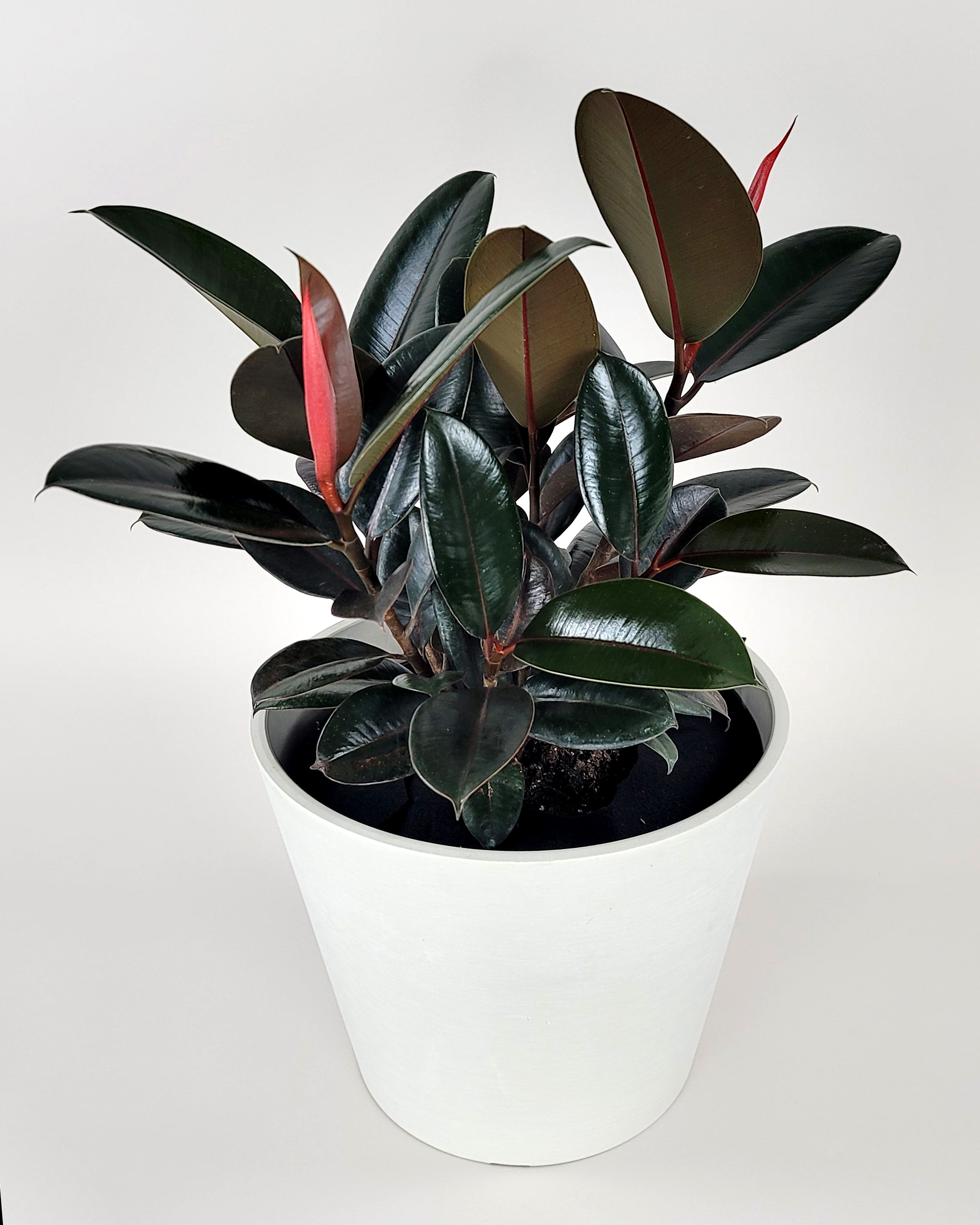Description
This Dark Foliaged Beauty will Make You Green with EnvyNative to Northeast India, the rubber plant has become a very popular houseplant because it’s easy to grow and exotic. The Ficus elastica plants were called “Rubber Plants” because their sap was once used to produce low quality rubber. The Burgundy variety is prized for its maroon and green glossy leaves. New growth is colorful with hues of red and pink. This is a fast growing and easy to care for plant. This plant is one of the ten variations of the ficus elastic plant. To keep this plant indoors, you need plenty of room because it can grow quite large and bushy. When placed outdoors, these large rubber trees can grow up to 80 feet in length. Nonetheless, this is an indoor plant that works as an incredible air purifier and adds beauty to your indoor space.Caring for Your Burgundy PlantFicus burgundy adapts incredibly well to indoor climates. This is why many people around the world will grow it as an ornamental plant. Nonetheless, be careful of some of the care measures.LightBy textbook, this plant requires bright areas and enjoys plenty of sunlight. However, direct and intense sunlight can also be damaging to the plant. Overall, you can keep place the plant in areas around your house that experience medium intensity light.On the other hand, you can also place it in a balcony or areas facing the window that experience constant filtered sunlight. The late afternoon and early morning sunlight are optimum, and keeping it under direct noon sunlight can burn the leaves.WaterWhen it comes to watering, the plant is tolerant to under watering conditions. This means that watering this plant once every week should cause no harm to it, as long as you provide it with good nutrition and sunlight.Therefore, to keep it healthy, you must water this plant every three to four days. When watering this plant, make sure that the pot is porous. Then, make sure that the water sinks through the holes after you provide it with moisture. This will ensure that you have thoroughly provided moisture to each root.FertilizingAdding fertilizer will be significant in improving the growth of the plant. When you keep the plant in a pot and water it, the water drains out along with some of the essential nutrients and salts. You have to add fertilizer to improve the nutrient quantity and replenish the soil.For the burgundy rubber tree, you do not have to be very specific with the fertilizer, and you can use any kind. Whether it is compost, seaweed solution, or chemical fertilizer, they should all do the trick. The general rule of thumb is to apply the fertilizer once a month or once every 40 days or so during the growing season.Common IssuesMost of the ficus plants are prone to bacterial and fungal attacks. Common causes for that can be misting and pets that bring about the disease. The infestations that you should watch out for include aphids, scale, spider mites, and thrips.PropagationWhen propagating ficus burgundy, make sure that you use sterile cutting equipment. You will also notice that this plant is easy to propagate because it has many aerial roots. Moreover, it is also highly durable and strong.PruningCutting the stem from the top of the plant will help improve the growth of the plant. Even though this method can be a little painful, however, keep in mind that this is an important step as it allows the plant to grow more densely.Without pruning, the plant will continue to grow vertically, and this can be troublesome for indoor locations. Furthermore, the rate of growth is also likely to slow down. Hence, pruning will help the plant grow faster.Potting / Repotting and SoilIf you will repot this plant, it is recommended that you replace the soil with a 50 percent indoor potting mix, along with a 50 percent cactus.You can also add three gallons or one cup of Perlite, depending on the pot size. Perlite helps add airflow to the soil, and this helps make it breathable. Overall, since the burgundy root tree does not have a complex root system, it can be easy to pot and repot.





